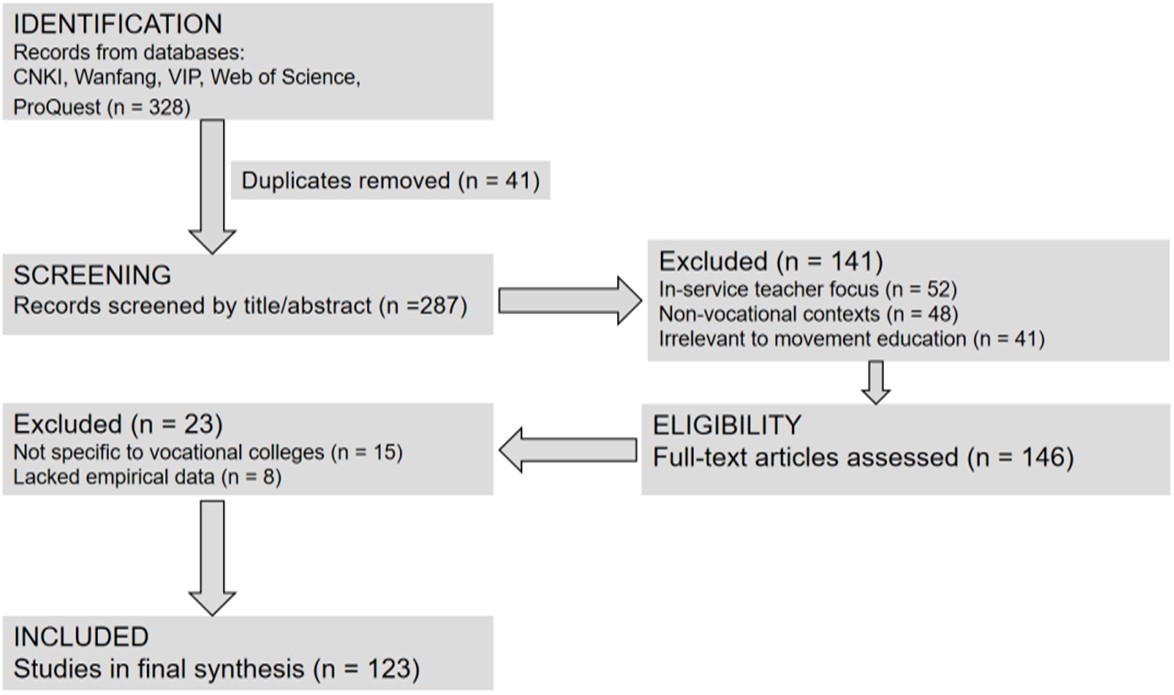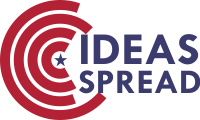Reforming Movement Education Preparation for Pre-service Preschool Teachers in Vocational Colleges' Preschool Education Programs: Policies, Practices, and Challenges
Abstract
Movement education in early childhood is foundational to motor competence, physical literacy, and lifelong health. In China, national strategies like "Healthy China 2030" and the "Outline for Building a Strong Sports Country" mandate high-quality physical activity in preschools. However, gaps persist in preparing pre-service preschool teachers, particularly in vocational colleges that train the majority of early childhood educators. This study systematically reviews 123 studies (2005 - June 2025) to analyze how post-2022 policy reforms shaped movement education training in vocational colleges. Key findings reveal persistent issues: Curriculum misalignment with child development, limited training in inclusive and play-based pedagogies, inadequate facilities and faculty preparation, and weak kindergarten partnerships. It concludes by proposing an integrated, competency-based module aligned with physical literacy and national policies to enhance teacher self-efficacy and practices.
References
[2] Donnelly, F. C., Mueller, S. S., & Gallahue, D. L. (2016). Developmental physical education for all children: Theory into practice. Human Kinetics. https://doi.org/10.5040/9781718210400
[3] Goodway, J. D., Ozmun, J. C., & Gallahue, D. L. (2019). Understanding motor development: Infants, children, adolescents, adults. Jones & Bartlett Learning.
[4] Zhu, J. (2009). Early childhood education and relative policies in China. International Journal of Child Care and Education Policy, 3(1), 51–68. https://doi.org/10.1007/2288-6729-3-1-51
[5] Ministry of Education. (2022). Kindergarten care and education quality assessment guidelines [Policy document]. http://jyt.fujian.gov.cn/xxgk/zywj/202202/t20220218_5829237.htm
[6] Chen, X. M. (2020). Current situation analysis and reform countermeasure research on Chinese children’s movement education development in the new era: A case in Luoding City. Journal of Occupational Technology, 19(7), 48–52. https://doi.org/10.19552/j.cnki.issn1672-0601.2020.07.010
[7] Zhou, X. (2011). Early childhood education policy development in China. International Journal of Child Care and Education Policy, 5(1), 29–48. https://doi.org/10.1007/2288-6729-5-1-29
[8] Zhou, X., Liu, Z., Han, C., & Wang, G. (2016). Early childhood education for sustainable development in China. In International Perspectives on Early Childhood Education and Development (Vol. 14, pp. 67–86). Springer. https://doi.org/10.1007/978-3-319-42208-4_4
[9] Yang, Y., & Rao, N. (2021). Teacher professional development among preschool teachers in rural China. Journal of Early Childhood Teacher Education, 42(3), 219–244. https://doi.org/10.1080/10901027.2020.1726844
[10] Han, Y. L. (2014). Effect of micro-teaching on preschool education majors' PE teaching skills [Master’s thesis, Yunnan Normal University].
[11] Wang, G. R. (2017). Research on the approach to cultivating preschool PE teaching ability for preschool education majors in Guizhou preschool teachers' college: A case study of Bijie preschool teachers' college. Journal of Contemporary Sports Technology, 7(32), 73–75. https://doi.org/10.16655/j.cnki.2095-2813.2017.32.073
[12] Sun, J. Y. (2024). Transformation of basic education under the context of building a leading country in education: What can be done, should be done, and how to do it. Research on Preschool Education, 1, 1–10.
[13] Ministry of Education. (2023). Guidelines for the integrated "post-course-competition-certificate" education mechanism in vocational education. Chinese Vocational and Technical Education, 32, 5–12.
[14] Yang, X., Wang, M., Wang, J., Zhang, S., Yang, X., & Zhao, L. (2024). Physical literacy and health of Chinese medical students: The chain mediating role of physical activity and subjective well-being. Frontiers in Public Health, 12, 1348743. https://doi.org/10.3389/fpubh.2024.1348743
[15] Xu, X. (2018). Current situation of pre-service preschool teachers’ physical education teaching competence in vocational colleges. Contemporary Sports Technology, 8(24), 149–151. https://doi.org/10.16655/j.cnki.2095-2813.2018.24.149
[16] Ding, G. M. (2017). Research on the present situation and countermeasures of physical education curriculum for preschool education majors in higher vocational colleges of Heilongjiang province [Master’s thesis, Harbin Normal University].
[17] Braun, V., & Clarke, V. (2006). Using thematic analysis in psychology. Qualitative Research in Psychology, 3(2), 77–101. https://doi.org/10.1191/1478088706qp063oa
[18] Cui, W. (2011). Physical education curriculum reform for preschool education specialty based on occupation and teacher's nature. Journal of Shanxi College of Education, 4, 71–73.
[19] Central Committee of the Communist Party of China & State Council. (2025). Master Plan for Building a Leading Country in Education (2024–2035) [Policy document]. Ministry of Education. https://www.gov.cn/gongbao/2025/issue_11846/202502/content_7002799.html
[20] Zhao, L., & Hu, X. (2008). The development of early childhood education in rural areas in China. Early Years, 28(2), 159–170. https://doi.org/10.1080/09575140802079756
[21] Gu, Q. (2018). On the training of pre-school education students' ability of organizing and teaching physical activities. Journal of Contemporary Sports Technology, 8(24), 149–151. https://doi.org/10.16655/j.cnki.2095-2813.2018.24.149
[22] Buckler, E. J., & Bredin, S. S. (2021). Examining the knowledge base and level of confidence of early childhood educators in physical literacy and its application to practice. Early Years, 41(2-3), 202–217. https://doi.org/10.1080/09575146.2018.1514488
[23] Gallahue, D. L., & Donnelly, F. C. (2007). Developmental physical education for all children. Human Kinetics.
[24] Ross, S. M. (2013). Pre-K physical education: Universal initiatives and teacher preparation recommendations. Quest, 65(1), 1–13. https://doi.org/10.1080/00336297.2012.705767
[25] Stork, S., & Sanders, S. W. (2008). Physical education in early childhood. The Elementary School Journal, 108(3), 197–206. https://doi.org/10.1086/529102


This work is licensed under a Creative Commons Attribution 4.0 International License.
Copyright for this article is retained by the author(s), with first publication rights granted to the journal.
This is an open-access article distributed under the terms and conditions of the Creative Commons Attribution license (http://creativecommons.org/licenses/by/4.0/).








1.png)

















